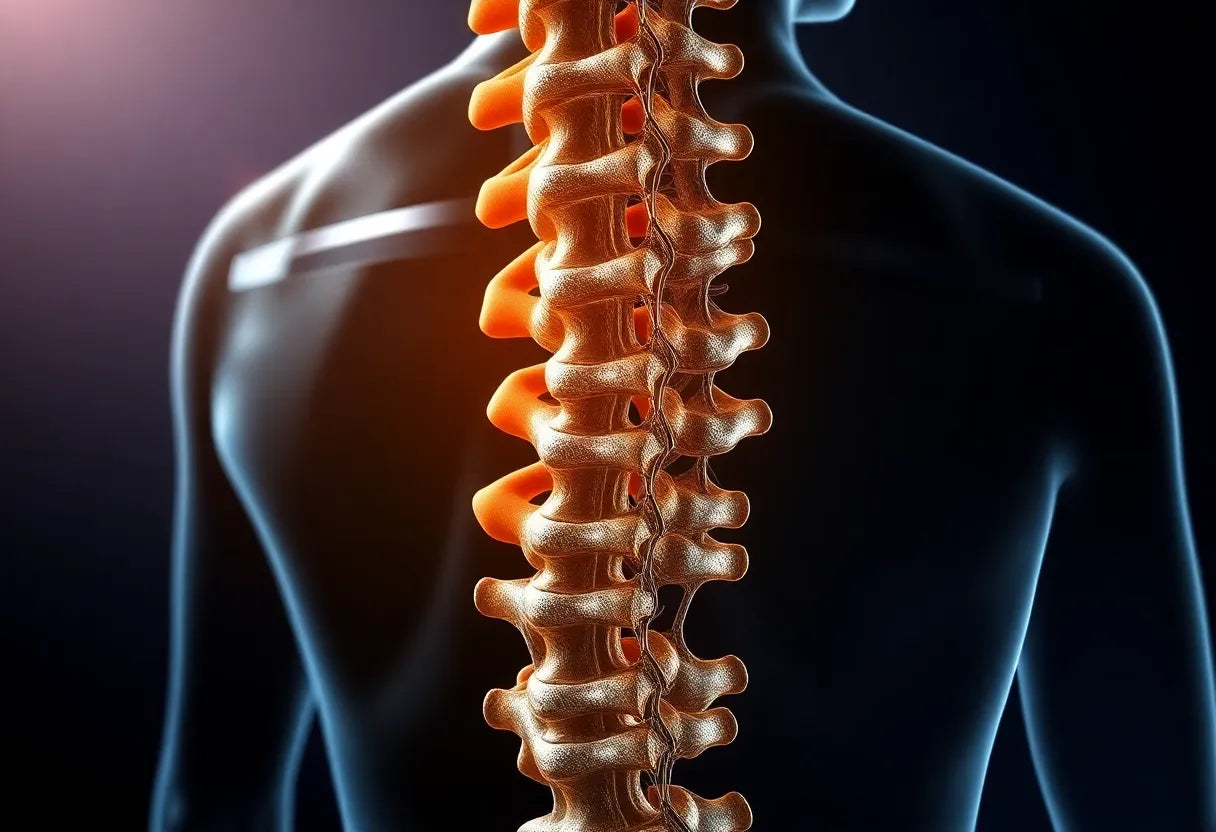In today's digital age, neck pain has become an increasingly common complaint, affecting millions of people worldwide. With many of us spending long hours hunched over computers and mobile devices, it's no surprise that neck pain is on the rise. This discomfort can range from mild to severe and can significantly impact daily life, leading to reduced productivity and overall well-being.
Understanding the importance of targeted exercises is crucial in managing and alleviating neck pain. Incorporating specific movements into your routine can help reduce discomfort and enhance neck function, promoting a healthier, pain-free lifestyle. This post will guide you through effective exercises designed to ease neck pain and improve your overall neck health.
The role of exercise in neck pain management
Exercise plays a vital role in managing neck pain by strengthening the muscles, improving posture, and enhancing mobility. When done correctly, these exercises can help alleviate pain and prevent future occurrences. By focusing on stretching, strengthening, and stabilization exercises, you can address the root causes of neck pain and work towards a more balanced and aligned posture.
Strengthening exercises target the muscles in your neck, shoulders, and upper back, helping to support your head and reduce strain. Stretching exercises, on the other hand, improve flexibility and range of motion, which can help relieve tension and stiffness. Stabilization exercises focus on maintaining proper alignment and control, reducing the risk of injury and promoting overall neck health.
Incorporating a routine that includes these types of exercises can offer numerous benefits. Not only can they help reduce pain and discomfort, but they can also improve your posture, enhance your mobility, and increase your overall strength and endurance. By dedicating just a few minutes each day to these exercises, you can make a significant impact on your neck health and overall well-being.

Women's Posture Shirt™ - White
Patented shirt activates muscles and can relieve neck and back pain for women.

Men's Posture Shirt™ - White
Supports better posture and helps reduce neck, shoulder, and back pain for men.
As you continue reading, you'll discover a variety of effective exercises that can help you manage and alleviate neck pain. These exercises are designed to be easy to perform at home, requiring minimal equipment and effort. With consistency and dedication, you can work towards a pain-free neck and a healthier, more active lifestyle.
types of neck pain exercises
When it comes to alleviating neck pain, a variety of exercises can make a significant difference. These exercises are designed to target different aspects of neck function, from strengthening to flexibility. One of the most effective types of exercises is deep cervical flexor training, which focuses on activating and strengthening the deep neck flexor muscles. These muscles play a crucial role in maintaining proper neck posture and alignment, and exercises targeting them have been shown to reduce pain and disability effectively.
Core stabilization exercises are another vital component in managing neck pain. By strengthening the core muscles, you can provide better support for the neck and spine, leading to improved posture and reduced strain. Additionally, general strengthening exercises, such as those using resistance bands or weights, can enhance endurance and contribute to pain reduction, particularly for individuals who spend long hours at a desk.
Stretching exercises are also beneficial, as they help improve flexibility and relieve tension in the neck and shoulder areas. While stretching alone can offer some relief, combining it with strengthening exercises tends to yield more significant results. By incorporating a mix of these exercises into your routine, you can address various aspects of neck pain and work towards long-term relief.
exercise instructions for neck pain relief
To effectively manage neck pain, it's essential to perform exercises correctly and consistently. Here are some detailed instructions for exercises that can help alleviate discomfort and improve neck function:
chin tucks
The chin tuck exercise is excellent for engaging the deep cervical flexors. To perform this exercise, sit or stand with a straight back. Gently retract your chin without tilting your head, creating a double chin. Hold this position for five seconds and repeat the movement 10 times. This exercise helps improve neck posture and alignment.
neck rotations
Neck rotations can enhance flexibility and relieve tension. To perform this exercise, keep your shoulders relaxed and slowly turn your head to one side. Hold the position briefly before switching to the other side. Aim for five rotations on each side. This exercise helps maintain a healthy range of motion in the neck.
shoulder blade squeezes
Shoulder blade squeezes target the muscles in the upper back, which support the neck. Sit or stand with your arms at your sides and draw your shoulder blades together without raising your shoulders. Hold the squeeze for five seconds and repeat 10 times. This exercise can help improve posture and reduce neck strain.
neck side bends and stretches
Neck side bends and stretches are effective for relieving tension and improving flexibility. To perform this exercise, gently tilt your head towards one shoulder while keeping your shoulders level. Hold the stretch for 10 seconds before switching sides. Repeat the movement five times on each side.
isometric exercises
Isometric exercises involve using hand resistance to strengthen neck muscles without actual movement. Press your head into your hand for resistance, holding the position for five seconds. Repeat this exercise five times in each direction. Isometric exercises help build strength and stability in the neck.
wall posture exercises
Wall posture exercises are excellent for reinforcing proper alignment. Stand with your back and head against a wall, then retract your chin. Hold this position for 10 seconds and repeat five times. This exercise encourages good posture and helps prevent forward-head posture.
effectiveness and evidence
The effectiveness of these neck pain exercises is supported by research and clinical trials. Studies have shown that targeted exercises, particularly those focusing on deep cervical flexors and core stabilization, can significantly reduce pain and improve function. While the quality of evidence varies, incorporating these exercises into your routine can provide short- to medium-term benefits. Improved posture, increased strength, and enhanced mobility are among the positive outcomes reported by individuals who consistently perform these exercises.
It's important to note that while these exercises are generally safe for home use, individuals with severe or persistent neck pain should seek professional guidance. By committing to a regular exercise routine, you can take proactive steps towards managing neck pain and achieving lasting relief.
practical tips for exercise success
Consistency is key when it comes to managing neck pain through exercise. Aim to incorporate these exercises into your routine at least three times a week. This regular practice will help you achieve the best results over time. Before starting your exercise session, consider warming up your neck muscles with a gentle massage or applying heat. This can help relax the muscles and reduce the risk of strain during exercise.
It's also beneficial to listen to your body and adjust exercises as needed. If you experience any discomfort or pain, reduce the intensity or take a break. For those with severe or persistent neck pain, seeking professional guidance from a healthcare provider or physical therapist is advised. They can provide personalized advice and modifications to ensure you're performing exercises safely and effectively.
long-term benefits and considerations
Incorporating neck pain exercises into your daily routine offers numerous long-term benefits. Over time, you'll likely notice improved posture, increased neck strength, and enhanced mobility. These exercises can help prevent future neck pain episodes by addressing underlying issues such as muscle weakness and poor posture.
For sustained relief, it's important to integrate these exercises into your daily life. Consider setting aside a specific time each day for your exercise routine, making it a habit. In addition to exercises, maintaining an ergonomic workspace and practicing good posture throughout the day can further support neck health.
frequently asked questions
what causes neck pain and how does exercise help?
Neck pain is often caused by muscle strain, poor posture, or prolonged periods of inactivity. Exercises help by strengthening neck muscles, improving alignment, and enhancing mobility, which can alleviate pain and prevent future issues.
which exercises are best for my specific pain?
It's recommended to consult with a healthcare provider to determine the best exercises for your specific condition. They can provide personalized advice based on your symptoms and needs.
how long should I do these exercises and when to expect results?
For noticeable improvements, aim to perform these exercises regularly for at least 4-8 weeks. Consistency is crucial for achieving the best results.
when should I see a professional?
If you experience severe, persistent, or radiating neck pain, it's important to seek professional help. A healthcare provider can assess your condition and recommend appropriate treatment options.
are these exercises safe to do at home?
Yes, these exercises are generally safe to perform at home. However, if you're unsure or have specific health concerns, consulting a professional is advised.
By integrating these exercises into your routine, you can effectively manage neck pain and work towards a healthier, pain-free lifestyle. Stay committed to your exercise regimen and enjoy the long-term benefits of improved neck health.
Källor
- Johnson, M. (2023). "Neck Pain and Exercise: A Comprehensive Review." Journal of Pain Management.
- Orthopaedic Section of the American Physical Therapy Association. (2017). "Clinical Practice Guidelines for Neck Pain."
- Smith, L. et al. (2017). "Neck Pain: Clinical Guidelines for Physical Therapy Management." Journal of Orthopaedic & Sports Physical Therapy.
- American Academy of Orthopaedic Surgeons. (2017). "Rehabilitation of the Spine: A Practitioner’s Manual."
- Harvard Health Publishing. (2023). "Practical Tips and Simple Exercises to Prevent Neck Pain."
- Stanford Medicine. (2023). "Neck Pain Clinical Practice Guidelines: Ensuring Quality Care."
- Mayo Clinic Staff. (2023). "Neck Stretches for Pain Relief." Mayo Clinic.
- Alberta Health Services. (2023). "Neck Pain: Exercises and Aftercare Information."


















